As recounted in my new book Methodism and Politics in the 20th Century, during the Ku Klux Klan’s 1920s national resurgence the Klan routinely disrupted church services of many denominations to present cash gifts to the pastor. Robed and hooded, often with torches, the procession was meant to both win friends and intimidate. Some church members were supportive, while others physically chased them out. Most were probably stunned.
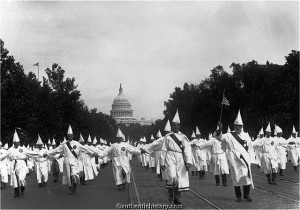
Methodist bishops in both north and south denounced the Klan. Some worried about Klan infiltration of the clergy. During an ordination service in New Jersey, the bishop asked ordinands to remove their jackets so he could check for any Klan insignia. In the 1920s the Klan advertised its supposed Americanism while emphasizing hostility to Catholics, Jews and immigrants. The Klan, like Methodism and most Protestant churches, supported Prohibition.
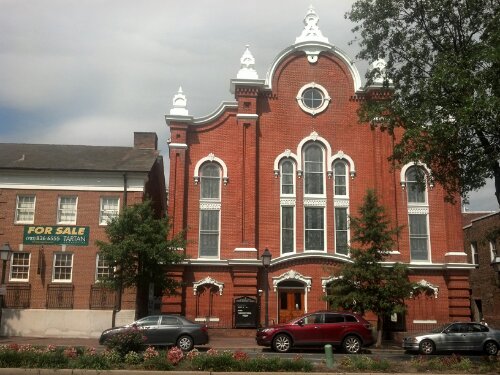
(Washington Street United Methodist Church)
I found no evidence that the Klan disrupted my own Alexandria, Virginia church, which belonged to southern Methodism.
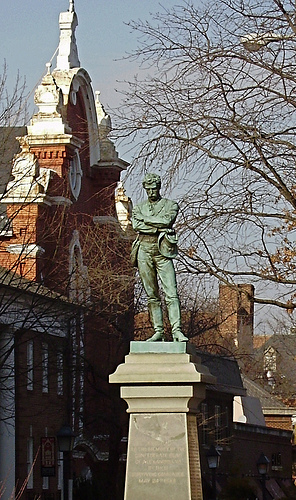
Nor did I find that the Klan visited the historic black Methodist church down the street. But newspapers did report Klan visits to the northern aligned Methodist congregation then across the street in the old downtown.
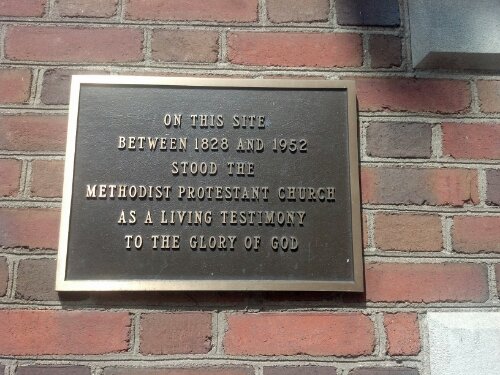
Trinity Methodist, which dates to the 1700s, and which was dedicated by Bishop Francis Asbury, was the mother of Alexandria Methodism, spawning my church, the black church, and the Methodist Protestant congregation once on the third corner to the north.
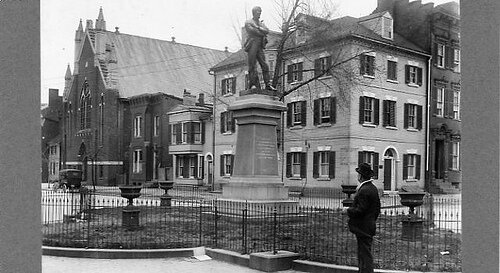
(Trinity Methodist Episcopal Church about 1920)
Northern and southern Methodism separated in the 1840s over slavery, and the Protestant Methodists split in the 1820s over the authority of bishops. All three reunited into one denomination in 1939, forming America’s then largest Protestant denomination.
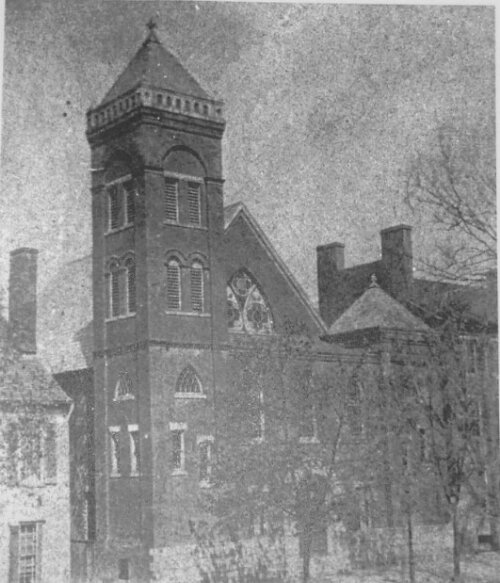
(Protestant Methodist Church on Washington Street)
In 1923 the Klan presented $100 for the “advance of the Christian Kingdom” to the surprised Methodist Protestant congregation of Alexandria. The apparently flustered minister reacted by saying he had “better shut up before he got in trouble.” Later he said, “May God bless the Alexandria Ku Klux Klan and its service to my Christ and my church.” And he added: “I only wish it were my privilege as an Irishman to be a member of it.” The last comment was perhaps a veiled barb aimed at the Klan.
By the end of the 1920s, the Klan imploded nearly as fast as it had inflated. But I found announcements of local Klan meetings posted in The Washington Post through the 1930s.
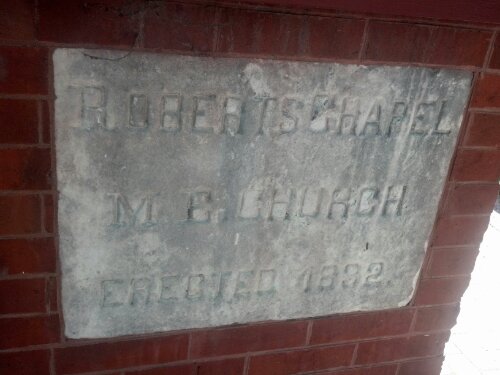
This morning, after leaving my own church, Washington Street United Methodist, built in the 1850s, I walked several blocks over to the the historic black church, Roberts Memorial, built 1832. It was founded as a mission of Trinity Church, where black members sat in the galleries. Roberts Church celebrates its 180th anniversary this Fall.
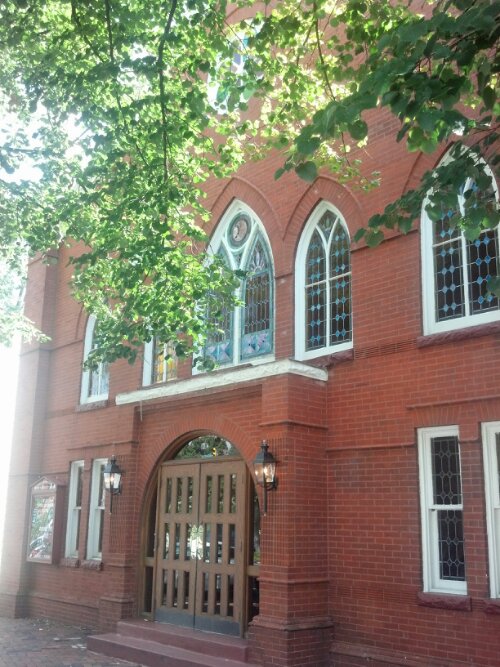
(Roberts Memorial United Methodist Church)
In the early 1940s Trinity Methodist disassembled its downtown sanctuary, which dated to 1804, though overhauled in the 1880s.
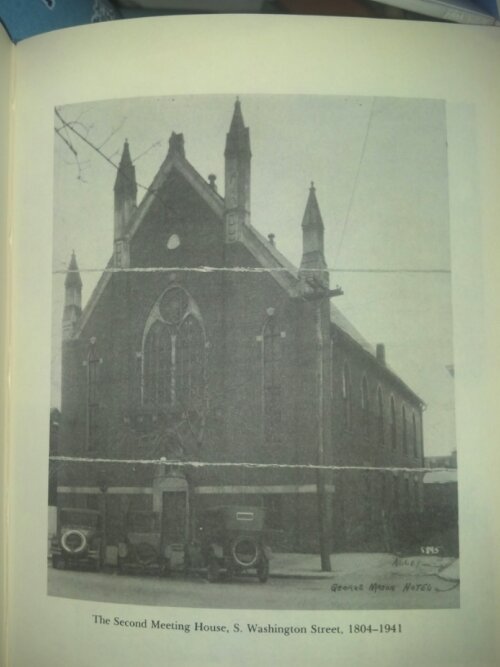
(Trinity Methodist Episcopal Church about 1920)
Using many materials from the original 1804 church, Trinity reassembled its sanctuary in the “suburbs” about three miles away, where I visited today.
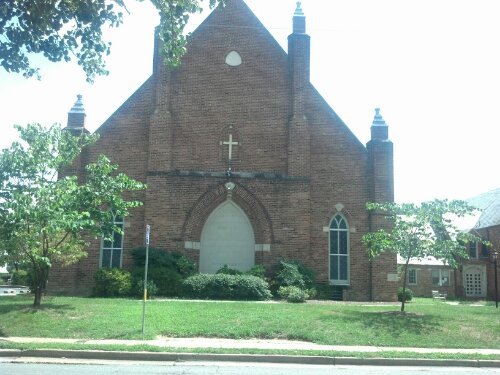
(Trinity United Methodist Church at its “new” location)
The pastor generously gave me a copy of the church’s history.
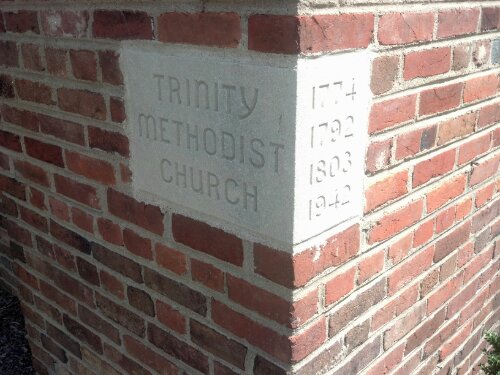
Afterwards I headed over to Alexandria Bible Church, built 1952, the descendant of the Methodist Protestant congregation, which also quit its old downtown location for the “suburbs.” They declined to participate in the 1939 reunification with wider Methodism and became independent.
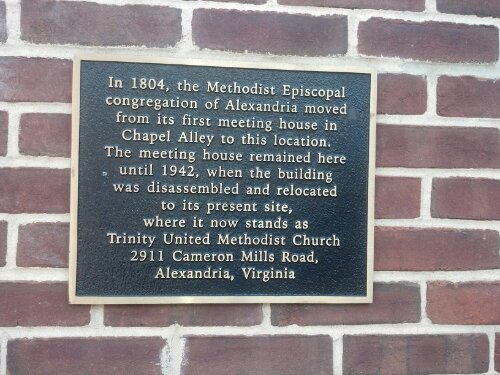
An elderly woman in my church, whose father was then pastor of my church, recalled the revered Methodist Protestant pastor was insufficiently credentialed for the new Methodist denomination, so they chose to leave. But their website explains: “In 1938, the church – then still a member of the Methodist denomination – broke away in protest against the liberal views of the denomination as a whole, standing firmly in favor of the inerrancy of Scripture and the doctrine of the deity of Jesus Christ.” The pastor today was very friendly and showed me a picture of their old downtown sanctuary.
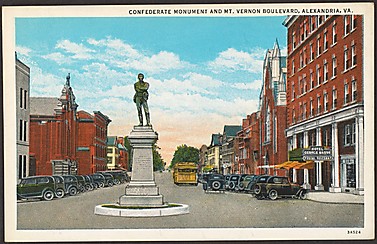
(Washington Street Church at left and Trinity Church at right)
Under the Union occupation of Alexandria during the Civil War both the Methodist Protestant and northern Methodist churches continued to host worship services, as did the black church.

(Washington Street Methodist Episcopal Church, South, as military hospital)
My southern church was used as a military hospital, decades later getting reimbursement from the federal government.
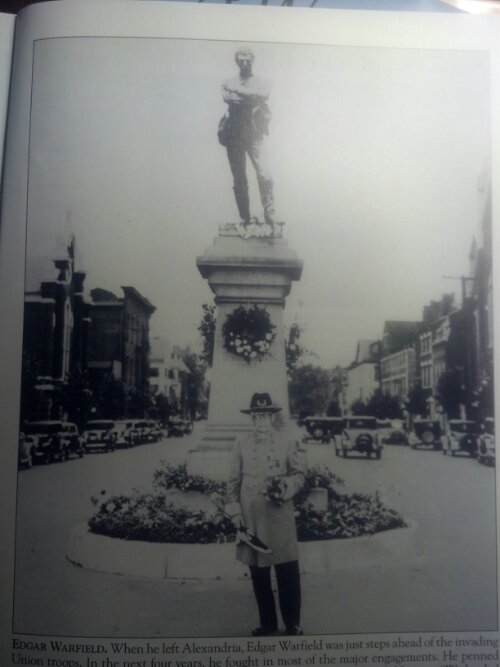
(Washington Street Church at left and Trinity Church at right)
Walking about today, I pondered that this corner of King and Washington Streets in Old Town Alexandria exemplifies over 200 years of Methodist and American history. That history includes revival, schism, war, racism, and reconciliation. Here’s a painting my father did of my church as it would have appeared during the Civil War. The current Victorian facade was added after the war.
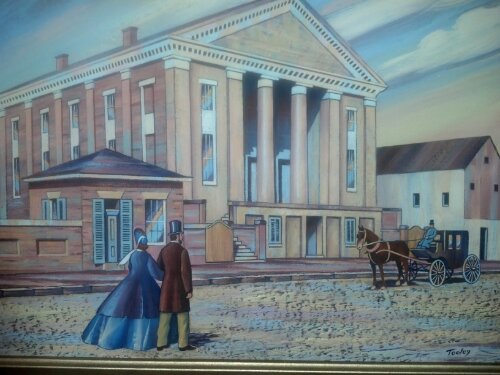




Comment by Dan Trabue on August 13, 2012 at 7:49 am
Interesting stories. I love hearing local church histories. My own church has a very interesting history that’s pretty well documented in at least a few books. We were begun in the 1880s by a former riverboat gambler and murderer who, when he got saved, had such a desire to serve the reprobates such as himself that he started this mission in Louisville’s (then and still) impoverished, troubled east downtown area specifically to reach out to the drunk the wretched, the foreigners and, in general, the least of these.
Great stories, all.
Comment by Bob Brooke on August 13, 2012 at 12:44 pm
A worthy avocation – local church history. Buildings, yes, but the people must have been amazing!
Comment by Allen D. Mitchell on August 13, 2012 at 8:23 pm
Lost my long comment on the history of The Methodist Protestant Church. Just log into http://www.themethodistprotestantchurch.com and learn of a denomination that broke with the Methodist Episcopal Church in 1828 and as one of the largest Methodist groups in 1939 many of the churches refused to join the liberal movements in 1939. Since there are not Bishops to govern and the church is democratic in government each church was owned by the congregation (in the United Methodist Church the congregations do not own their own church) and each congregation could make its own decision as to whether join, many did not. Some became independent but a group walked out of the 1939 uniting conference and retained the name The Methodist Protestant Church. That group still exists with a General Conference in the U.S. and a mission conference in Belize. At age 75 I left the Methodist Church organiztion I had known since childhood and joined with my great grandfather in becoming a minister in the Methodist Protestant Church. He did it at a much younger age in 1840 and spent many years as a missionary doctor and minister in that denomination, later becoming president of the Missouri Conference. Methodists need to return to the motto of The Methodist Protestant Church, Jude 3. May God richly bless those trying their best to live for Jesus Christ in todays liberal world. Allen D. Mitchell
Comment by John Mack on July 11, 2019 at 1:47 pm
So why does the Methodist Church display the burning cross as its symbol?
Comment by Jeffrey Walton on July 11, 2019 at 2:58 pm
The UMC logo is a direct reference to Pentecost in Acts chapter 2 verse 3, the cross signifying Christ and the flame signifying the Holy Spirit. More here: http://www.umc.org/resources/a-mark-known-the-world-over